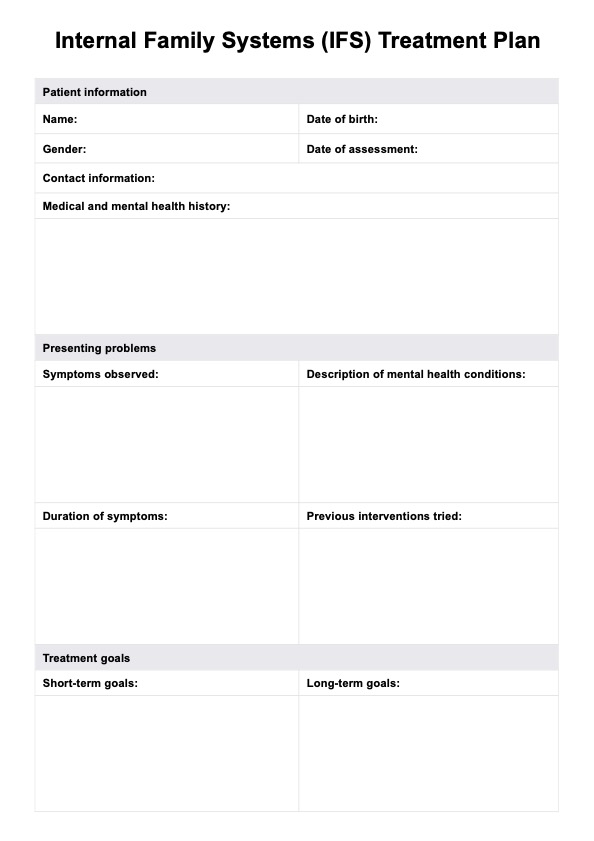The internal family systems (IFS) model is a psychotherapy approach that views the mind as an internal system of distinct inner parts with different roles. IFS therapy aims to restore mental balance by helping individuals access their person’s core or core Self to lead with self-compassion and resolve internal conflicts.

IFS Treatment Plan
Download Carepatron's free Internal Family Systems (IFS) Treatment Plan PDF template to better understand how this therapy model is implemented in practice.
IFS Treatment Plan Template
Commonly asked questions
The 6Fs framework is a structured process in IFS therapy that helps individuals engage with their inner parts through six steps: Find, Focus, Flesh it Out, Feel Towards, BeFriend, and Fear. IFS therapists to guide patients in identifying, understanding, and integrating extreme roles within their internal system for emotional healing.
Yes, internal family systems therapy is recognized as an evidence-based treatment for trauma. It is effective in addressing depressive symptoms, PTSD, and emotional dysregulation. It can also help individuals process painful emotions, reduce reliance on maladaptive coping strategies like substance abuse, and promote long-term psychological healing.
EHR and practice management software
Get started for free
*No credit card required
Free
$0/usd
Unlimited clients
Telehealth
1GB of storage
Client portal text
Automated billing and online payments











